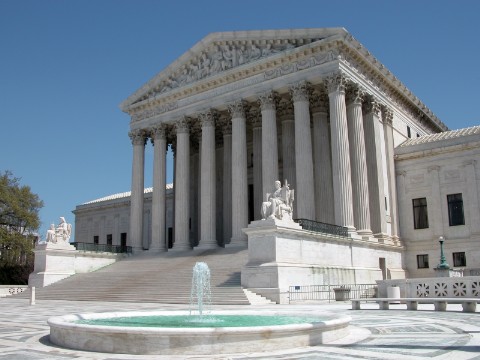
This term the U.S. Supreme Court will hear two significant Clean Air Act (CAA) cases—one involving regulating upwind states that pollute downwind states and the other involving regulating greenhouse gases from stationary sources. Both cases involve states siding with or against the EPA and each other. The Supreme Court agreed to hear the latter case, Utility Air Regulatory Group v. EPA, in October.
In 2007 in Massachusetts v. EPA, the Supreme Court ruled that the Environmental Protection Agency (EPA) has the authority to regulate the emissions of greenhouse gases from new motor vehicles under the CAA. The question in Utility Air Regulatory Group v. EPA is whether EPA may regulate greenhouse gases emitted from stationary sources, like power plants and factories, too. The D.C. Circuit concluded that EPA does have this authority reasoning that in Massachusetts v. EPA the Court determined that CAA's overarching definition of “air pollutant,” which applies to all provisions of the Act not just those related to new motor vehicles, includes greenhouse gases.
The plot thickens. In the Tailoring Rule, EPA significantly increased the amount of greenhouse gases that will require permitting initially because otherwise millions of stationary sources will need permits. Had EPA not increased the amount, EPA estimates 230,000 full-time employees would be needed to deal with permit applications to the cost of an additional $21 billion per year.
Lyle Denniston of SCOTUSblog suggests there is a broad and a narrow question in this case. The broad question is whether EPA can “bootstrap” regulation of one form of air pollution from one context to another. According to Denniston, “[I]f the Court gives a clear-cut answer to that sweeping question, it would either significantly enhance EPA’s global warming powers, or sharply curtail them.” The narrower question is whether EPA can regulate stationary sources, given that it only did so after drastically modifying the permit threshold.
Local governments are affected by this case because, on one hand, they own stationary sources that emit greenhouse gases and may require permits, and on the other hand, they would benefit from reduced greenhouse gases emissions.
New, Reduced Membership Dues
A new, reduced dues rate is available for CAOs/ACAOs, along with additional discounts for those in smaller communities, has been implemented. Learn more and be sure to join or renew today!
